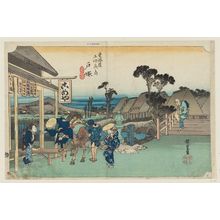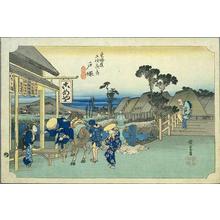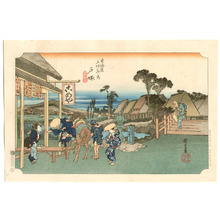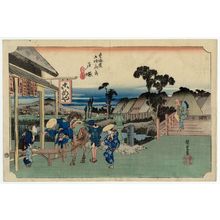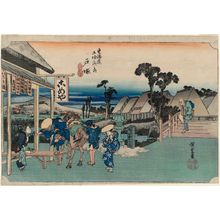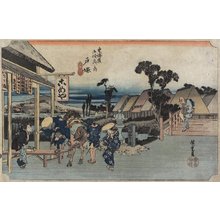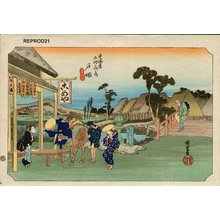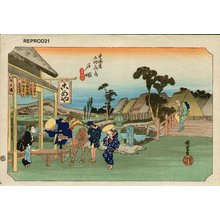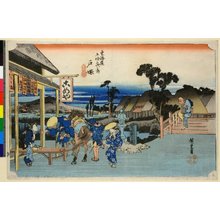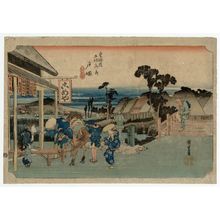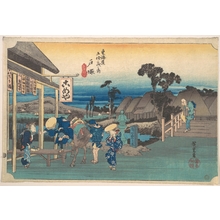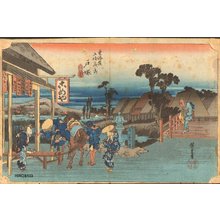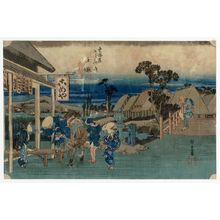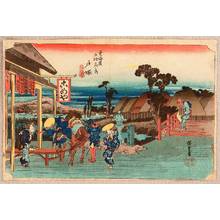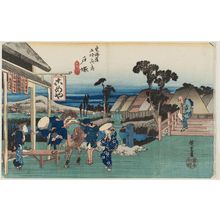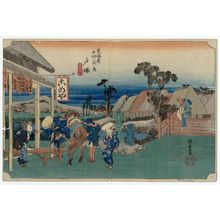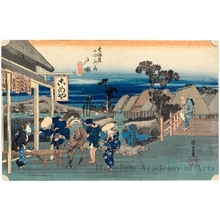Japanese Print "Junction with the Road to Kamakura at Totsuka (Station #6)" by Utagawa Hiroshige
Artist:Utagawa Hiroshige
Title:Junction with the Road to Kamakura at Totsuka (Station #6)
Date:c. 1833 - 1834
Details:More information...
Source:Honolulu Museum of Art
Browse all 5,476 prints...
Description:
A picturesque riverside inn is busy with arriving travelers. A man equipped with layers of traveling clothes¬--tucked up kimono, indigo-blue traveling coat, straw hat, black leggings, and straw sandals-leaps from his horse, while his barelegged groom, wearing only a blue cotton shibori outfit, stands by. A female traveler tries to take off her hat. She is clad in a blue kimono that sports white floral patterns. The outer kimono is tightly tied around the hip, which has the effect of raising the hem for walking. Her legs are protected by leggings and she wears straw sandals. This typical image of a woman traveler can be seen on many paths in Hiroshige's Tökaidö road and Hokusai's Mount Fuji series. Welcoming them is a woman from the inn who is dressed in typical fashion, in a dark indigo-blue kimono. Instead of the straw sandals of a traveler, she wears wooden clogs (geta). Her long kimono sleeves are tied up with a cord that crosses at her back, in the style called tasukigake, allowing her to move her arms freely. As this print reflects, the daily wear of commoners in the late Edo period reflects the circumstances under which the textiles were created. Expensive or elaborately woven textiles were beyond the means of most people, and in any case, government regulations forbade commoners to own or wear them. Ordinary people's clothes were made from durable and relatively inexpensive materials such as cotton and hemp, dyed in quiet, practical indigo and other natural dyes. Without access to complex weaving techniques, fabrics were decorated through the relatively simple process of dyeing. Despite these limitations, commoners' textiles blossomed in their own special way. (from “Blue and White” textiles exhibition 8/28/2008-)

